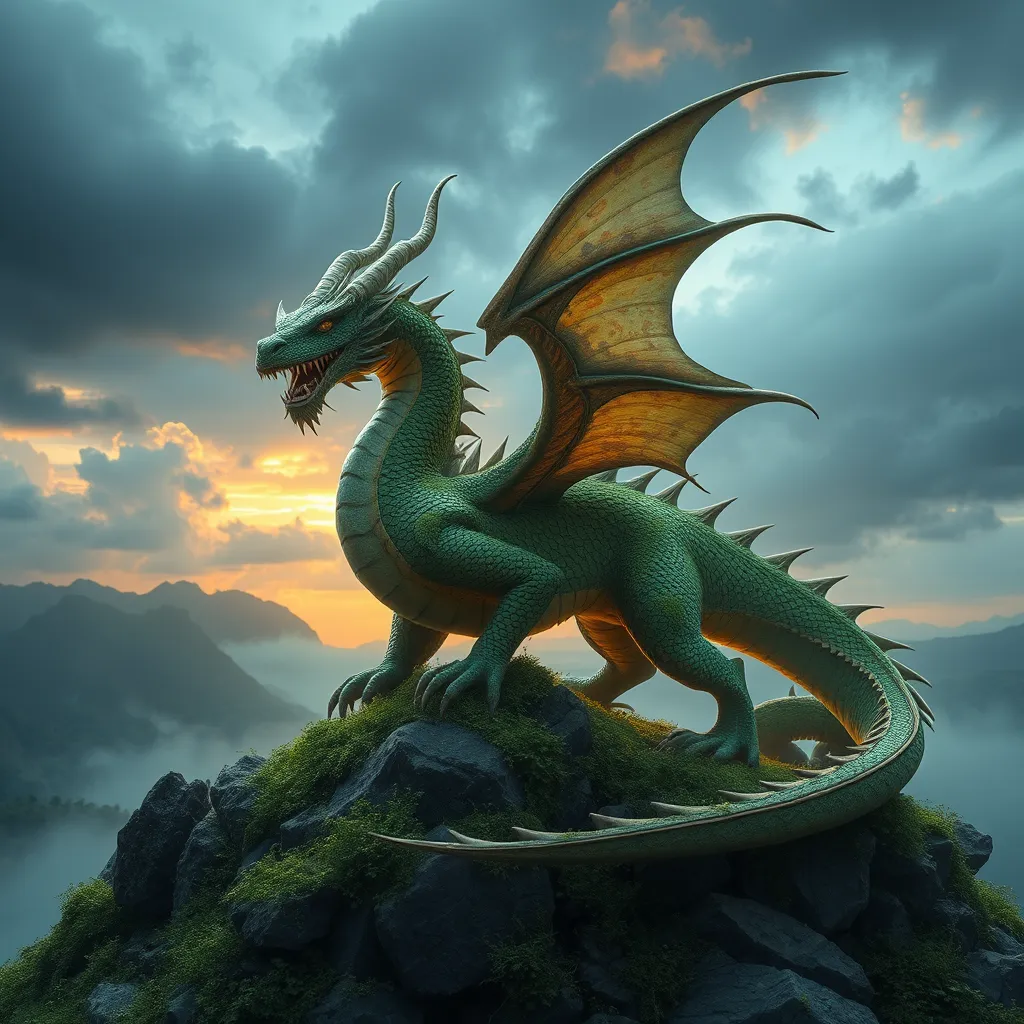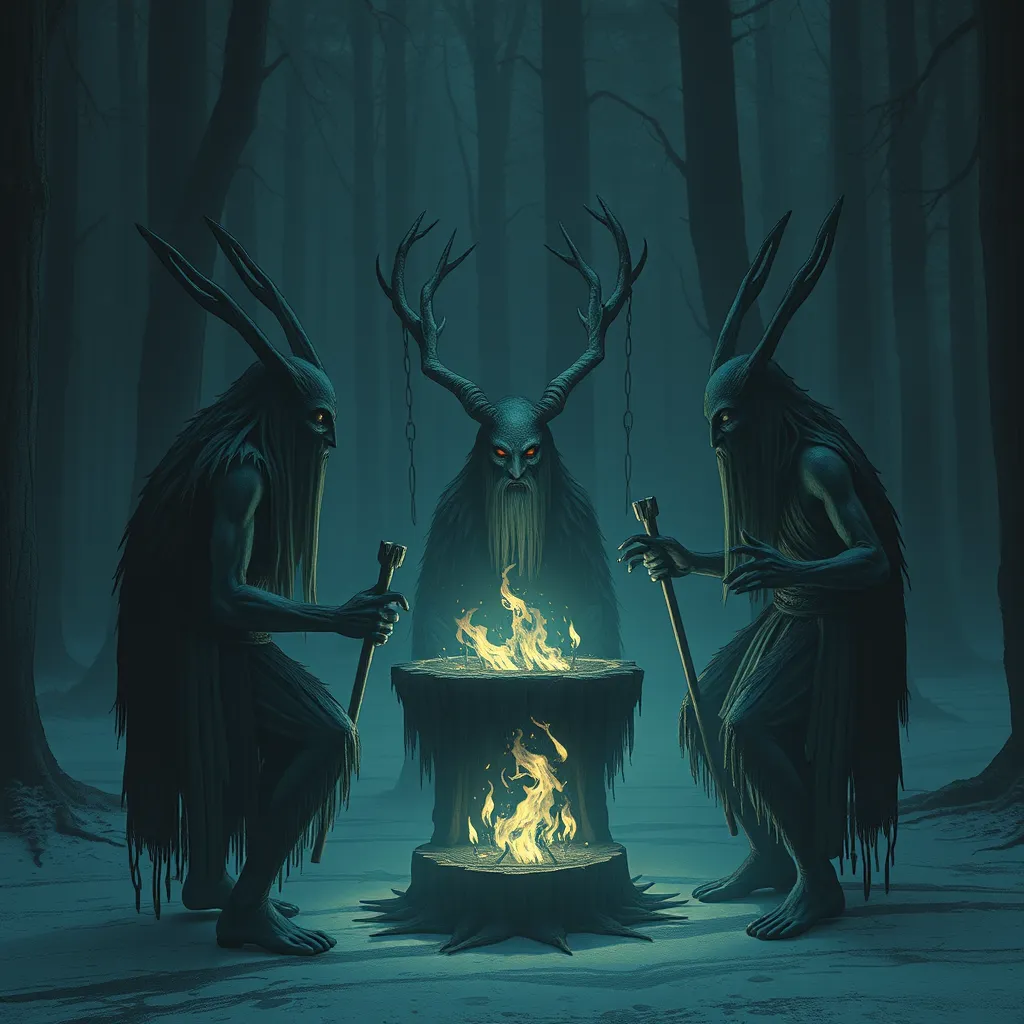The Dragon’s Nature: Exploring the Environmental and Ecological Aspects of Dragons in Myth
I. Introduction
Dragons have captivated the human imagination for centuries, appearing in the folklore and mythology of cultures around the world. These magnificent creatures are often depicted as powerful beings, embodying both fear and admiration. Understanding dragons within their mythological contexts can provide valuable insights into their symbolic significance and the roles they play in environmental and ecological narratives.
The importance of examining dragons’ environmental and ecological roles lies in their representation of nature’s forces, both constructive and destructive. By studying these mythological creatures, we can gain a deeper appreciation of how cultures interpret the relationship between humanity and the natural world.
This article aims to explore the multifaceted nature of dragons, delving into their symbolism across cultures, their roles as environmental guardians, their interactions within mythical ecosystems, and their continuing relevance in contemporary environmental discourse.
II. The Symbolism of Dragons in Different Cultures
A. Dragons in Eastern Mythology: Guardians of Nature
In Eastern cultures, particularly in Chinese mythology, dragons are often seen as benevolent creatures that are intimately connected with nature. They are revered as symbols of power, strength, and good fortune. Eastern dragons are typically depicted as water deities, responsible for rain and floods, thus directly influencing agriculture and fertility.
B. Western Dragons: Destructive Forces and Their Impact on the Environment
In contrast, Western mythology often portrays dragons as fearsome, destructive beasts that hoard treasure and wreak havoc on human settlements. The image of the dragon as a villain is prevalent in tales where they are slain by heroes, signifying the struggle against chaos and destruction. This portrayal can reflect humanity’s fear of nature’s unpredictability and the potential for environmental devastation.
C. Comparative Analysis of Dragon Symbolism Across Cultures
The comparative analysis of dragon symbolism reveals a dichotomy between Eastern and Western perspectives. While Eastern dragons embody harmony and protection, Western dragons represent chaos and destruction. This contrast highlights the diverse ways in which cultures interpret the relationship between humans and the natural world, allowing for a richer understanding of ecological narratives.
III. Dragons as Environmental Guardians
A. The Role of Dragons in Protecting Natural Resources
Many myths position dragons as guardians of vital natural resources, such as water, minerals, and fertile land. In these stories, dragons often protect sacred sites, ensuring that the balance of nature is maintained. Their presence symbolizes the necessity of safeguarding the environment and the resources it provides.
B. Myths of Dragons and Fertility: Rainmakers and Land Stewards
Numerous cultures depict dragons as rainmakers, responsible for bringing life-giving water to parched lands. This association with fertility and growth underscores the dragon’s role as a steward of the earth, emphasizing the importance of water in sustaining life.
C. Case Studies: Notable Myths Where Dragons Preserve Nature
- The Chinese Dragon: Celebrated during festivals, the Chinese dragon is often invoked for rain, symbolizing blessings on crops.
- The European Water Dragon: In various European myths, water dragons guard lakes and rivers, ensuring the purity and abundance of these vital resources.
IV. Ecological Relationships: Dragons and Other Mythical Creatures
A. Interactions Between Dragons and Other Mythical Beasts
Dragons often inhabit ecosystems populated by other mythical creatures, creating complex relationships that mirror ecological dynamics. These interactions can range from symbiotic partnerships to predatory conflicts.
B. Predatory and Prey Dynamics in Mythical Ecosystems
In many myths, dragons serve as apex predators, influencing the populations of other mythical beings. Their predatory role helps maintain balance within these ecosystems, reflecting the interconnectedness of species.
C. The Role of Dragons in Maintaining Ecological Balance
Dragons can be seen as exemplars of ecological balance, representing the natural order where every creature has a role. Their presence in myths conveys the message that the health of the environment depends on the interactions between all beings, including humans.
V. The Impact of Dragons on Human Communities
A. Myths of Coexistence: Harmony Between Humans and Dragons
Some myths illustrate a harmonious relationship between humans and dragons, where both coexist and benefit from each other’s presence. These narratives often emphasize mutual respect and the importance of living in harmony with nature.
B. The Consequences of Dragon Wrath: Environmental Catastrophes
Conversely, tales of dragon wrath often serve as cautionary tales about the consequences of environmental degradation. When humans disrespect nature, dragons may retaliate, leading to disasters such as droughts, floods, or plagues.
C. Lessons from Myths: Sustainable Practices Inspired by Dragon Lore
Myths involving dragons can inspire sustainable practices by highlighting the need for balance and respect for nature. These stories encourage communities to adopt practices that honor the earth and its resources.
VI. Modern Interpretations of Dragons and Environmentalism
A. Dragons as Symbols in Contemporary Environmental Movements
In modern times, dragons have been reinterpreted as symbols of environmental activism. Their mythical nature serves as a powerful metaphor for the fight against ecological destruction and climate change.
B. Literature, Film, and Art: Dragons as Advocates for Nature
Contemporary literature, films, and art often portray dragons as protectors of the environment, reflecting the growing awareness of ecological issues. These representations can inspire audiences to consider their role in preserving nature.
C. The Influence of Mythological Dragons on Modern Ecological Thought
The influence of dragon mythology on modern ecological thought is significant, as it encourages a narrative of guardianship and responsibility towards the environment. Dragons symbolize the need for stewardship, urging humanity to protect the planet.
VII. The Future of Dragon Myths in Environmental Discourse
A. The Role of Dragons in Promoting Awareness of Ecological Issues
As environmental challenges continue to escalate, dragon myths can play a crucial role in promoting awareness of ecological issues. By recontextualizing these stories, we can engage new generations in discussions about sustainability and conservation.
B. Myth as a Tool for Environmental Education
Myths can serve as effective educational tools, providing relatable narratives that help convey complex ecological principles. By integrating dragon lore into environmental education, we can capture the imagination of learners and inspire action.
C. The Evolution of Dragon Narratives in the Context of Climate Change
The narratives surrounding dragons are likely to evolve as society grapples with climate change. Future interpretations may focus on dragons as champions of environmental justice, embodying the struggle to protect the earth from human-induced harm.
VIII. Conclusion
In summary, dragons hold a significant place in mythology, representing a complex interplay of environmental and ecological themes. Their roles as guardians of nature, their interactions within mythical ecosystems, and their impact on human communities provide valuable lessons for our current relationship with the environment.
The timeless relevance of dragon myths serves as a reminder of the interconnectedness of all beings and the need for sustainable practices. As we face pressing ecological challenges, embracing the lessons of dragon lore can guide us toward a more harmonious and sustainable future.
Let us heed the wisdom of these mythical creatures and strive to protect the natural world for generations to come.



